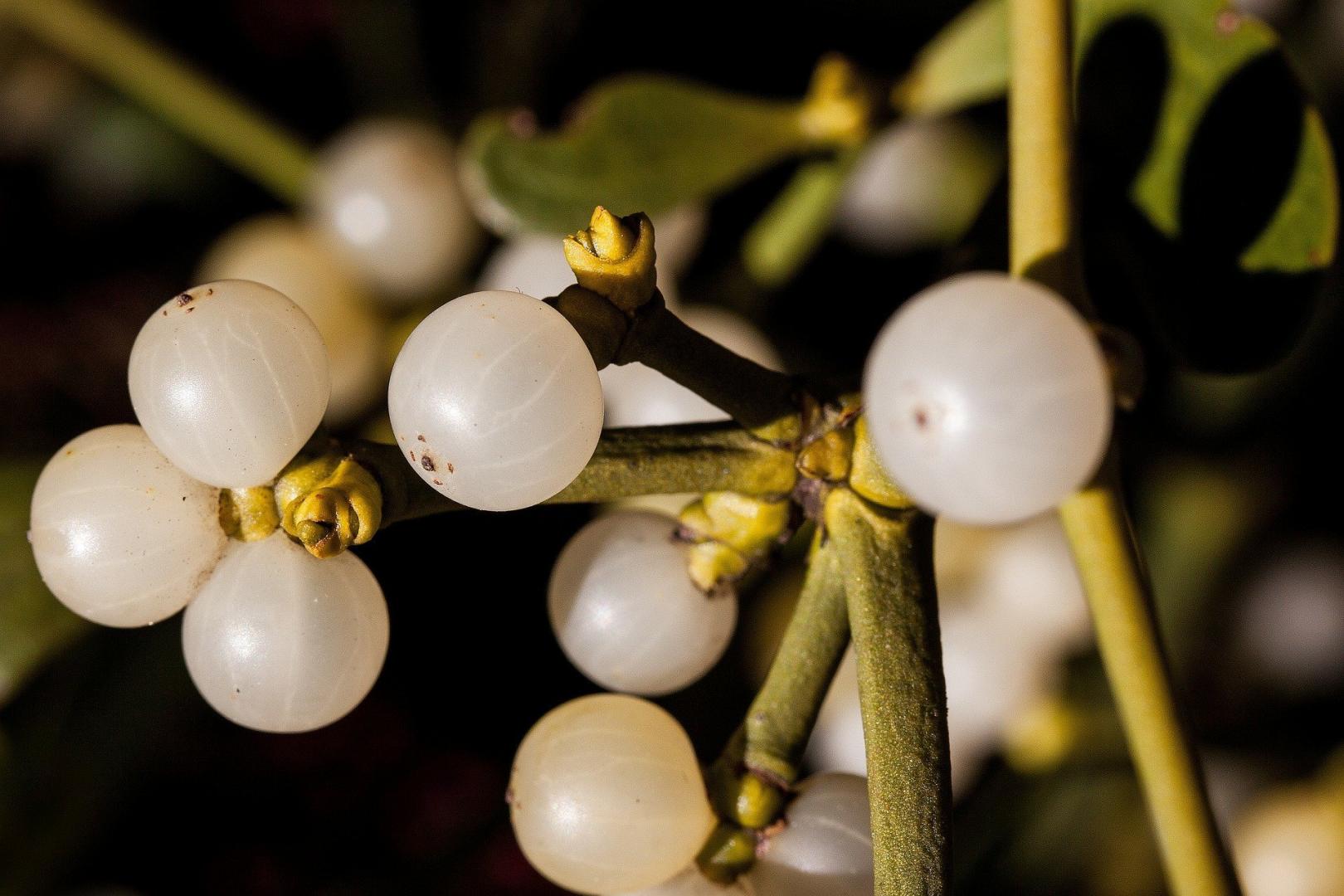Flaura and Fauna by Richard Warren
Mistletoe –
Viscum album
IF ever there was a plant steeped in magic, folk memory and myth it is mistletoe: from the custom of festive kissing, through Druidic rites, to even the assassination in Norse myth of Balder the Beautiful by a spear fashioned of mistletoe wood – the only kind that could kill him.
The plant is a woody evergreen with branching green stems and yellowish, leathery leaves. The separate male and female flowers are insignificant and borne in spring in a small compact inflorescence. The fruit is the familiar sticky white berry.
When a seed lands on a branch or twig and germinates, it sends out a growth called a haustorium which penetrates the bark and establishes itself in the water-bearing xylem tissue of the tree. But as the stem and leaves are green, the plants can photosynthesise and create their own sugars, taking only water and minerals from the tree host.
The berries are so sticky that birds that carry them are often seen trying to wipe them from their beaks, thus depositing the seeds. It was believed that the thrush was the main culprit, hence the name Mistel-thrush (Turdus viscivorus). One quote from 1768 said: “The mistletoe would be lost out of nature if not propagated by the thrush.”
Many tree species bear mistletoe but the rose family, apples etc, are the most frequent hosts. In fact a survey in the mid-1800s showed that 34 per cent of apple trees in Herefordshire orchards bore mistletoe.
Limes and poplars are also frequently colonised but it is rare on conifers and other evergreens, and scarce in Scotland. Mistletoe grown on oak was highly prized by druids, although much “druidic tradition” was hyped up by Victorian Romantics.
We are all familiar with twigs hanging in the doorway, but a more refined version was for each beau to take a berry as a maiden was kissed.
Once the berries ran out, the kissing stopped. Until recently, in one Herefordshire village the tradition was to cut the mistletoe only on New Year’s Eve and mount it at midnight.
Understandably, given its mystique, mistletoe is prescribed for all manner of conditions. A 79-year-old Somerset woman remembered her elders making tea from the plant as a remedy for measles. And there are tales of cures for cancers, and strong anecdotal stories of cures for epilepsy through the ages. However, the very toxicity of the berries would give pause for thought about any home experimentation.
Richard Warren is a botanist from Barnard Castle






